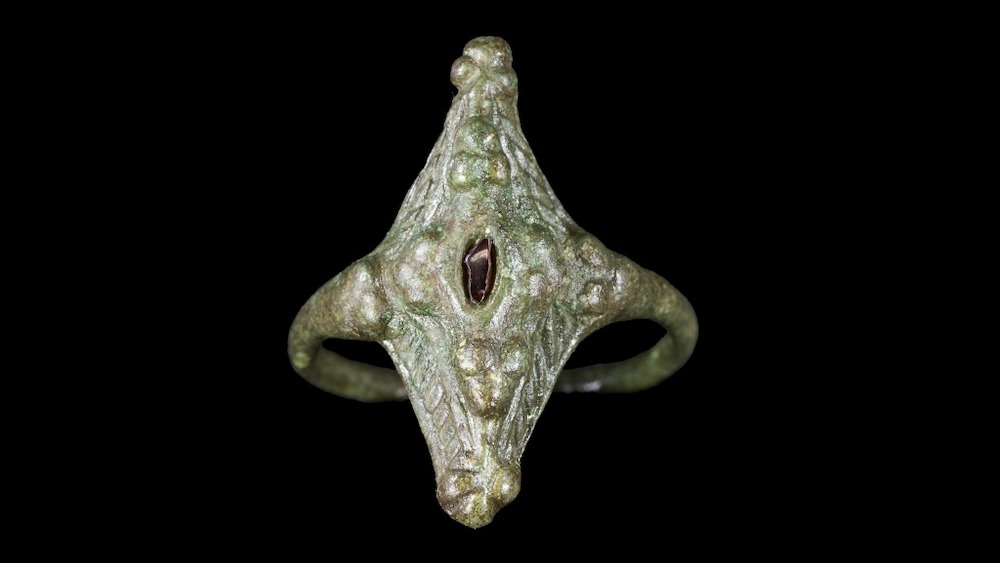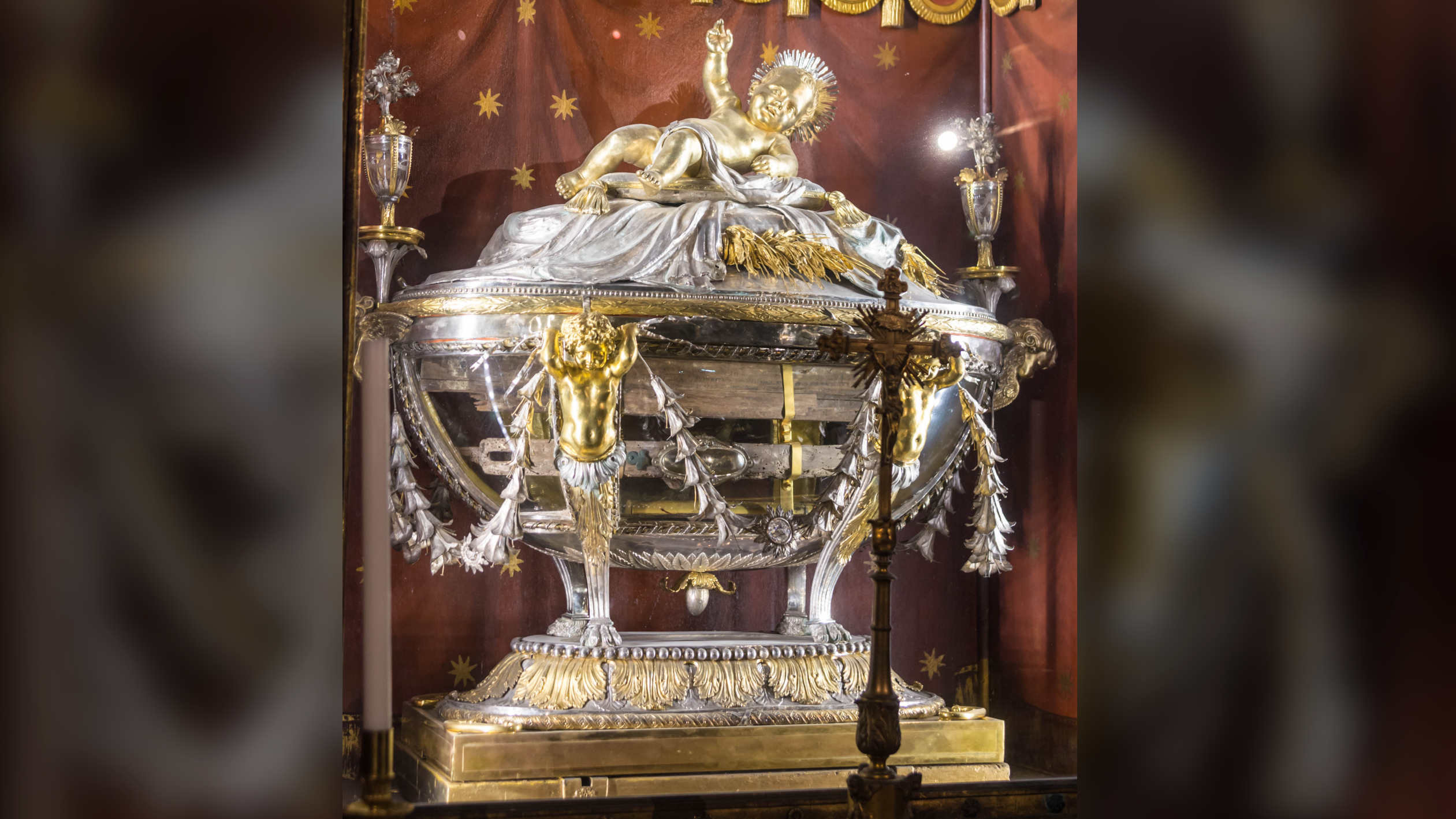'Remarkable' 1,000-year-old ring from Scotland's 'painted people' found at destroyed fort
During an archaeological dig at the former site of a Pictish fort, a volunteer unearthed a rare metal ring with a red centerpiece.

A volunteer in Scotland has discovered a rare, 1,000-year-old ring with a red centerpiece at a fort that once belonged to the Picts, also known as the "Painted People" because of their affinity for tattoos.
John Ralph, a retired engineer and alum of the University of Aberdeen in Scotland, joined an ongoing archaeological dig on a whim. On the last day of the event, Ralph found the "remarkable" piece of jewelry, which is "kite-shaped," buried in the remnants of a homesite that was once part of Burghead Fort. This historical Pictish site is located on a promontory, a piece of land that juts into the water. The area is now part of the town of Burghead, which was built in the 1800s and destroyed and covered much of the fort's archaeological remains, according to a statement from the University of Aberdeen.
The Picts were early inhabitants of Scotland known for tattooing their bodies and resisting Roman rule. They were first described by Roman historians (the Latin word for "paint" is "picti"), and their culture, held by tribal peoples organized into loose confederations, lasted from about the fourth to the ninth centuries. Except for some mysterious carved symbols, the Picts didn't leave a written language, so anything archaeologists find can shed light on Pictish society.
In the case of the newfound metal ring, archaeologists noticed that it features either a piece of garnet or red glass in its center.
Related: Mysterious 'painted people' of Scotland are long gone, but their DNA lives on
"There are very few Pictish rings which have ever been discovered and those we do know about usually come from hoards, which were placed in the ground deliberately for safekeeping in some way," Gordon Noble, a professor of archaeology at the University of Aberdeen, said in the statement. "We certainly weren't expecting to find something like this lying around the floor of what was once a house."
Noble added that the team has found "other evidence of metalworking" at the site, as well as several buildings. "This further indicator of the high-status production of metalwork adds to the growing evidence that Burghead was a really significant seat of power in the Pictish period," he said.
Get the world’s most fascinating discoveries delivered straight to your inbox.
The ring is now being analyzed by the National Museum of Scotland's post-evacuation service.
"We will now look at the ring, evidence of buildings and other artifacts to consider whether the ring was crafted on the site and who such an important piece of jewelry might have been made for," Noble said.
Jennifer Nalewicki is former Live Science staff writer and Salt Lake City-based journalist whose work has been featured in The New York Times, Smithsonian Magazine, Scientific American, Popular Mechanics and more. She covers several science topics from planet Earth to paleontology and archaeology to health and culture. Prior to freelancing, Jennifer held an Editor role at Time Inc. Jennifer has a bachelor's degree in Journalism from The University of Texas at Austin.


